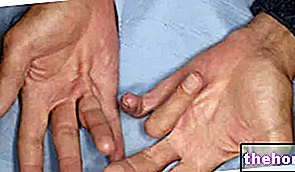Edited by Dr. Davide Cacciola
Scoliosis is a complex pathology, the cause of which remains unknown in 70-80% of cases; in all these situations of etiological indeterminacy we speak of "idiopathic scoliosis". Even if the available knowledge does not allow to identify a certain cause, it is assumed that there is probably more than one.
Thanks to the scientific research carried out in the last 25 years, scoliosis has nevertheless been considered as the final result of a complex syndrome with multifactorial aetiology, which originates far from the spine and involves and influences the most important receptors at the postural level, as well as the Central nervous system.
If on the one hand the studies did not help to trace a specific trigger, on the other hand they helped to correct the definition, vision and interpretation of scoliosis.
In the Classic Definition, scoliosis is a permanent lateral and rotatory deviation of the spine, with multiple triggering causes, resulting in aesthetic and functional alterations. It worsens in correspondence with the growth phase and stops in evolution when the activity of bone and cartilage growth ceases.
This definition is linked to a two-dimensional view of scoliosis, since lateral deviation and rotation of the spine are predominantly considered. The lateral deviation, more evident from a visual point of view and more linked to the common imagination of the scoliotic patient, is actually the least influential from a postural point of view.
In the new vision, scoliosis is considered as a three-dimensional deformation that develops in space.
In the Modern Definition scoliosis is a curve that develops in space. It is due to a generalized torsional movement throughout the spine. This movement is generated by a localized perturbation that causes a break in the balance of the spine (Perdriolle, 1979)
This is therefore a three-dimensional view.Predominantly anteroposterior deformation in lordosis is considered, associated with vertebral torsion movements. This deformation is expressed laterally. It is a three-dimensional curve.
The first factor that is evident in an idiopathic scoliosis is an extensive LORDOSIS in the sagittal plane. If for some reason a torsional movement of a vertebra is associated with this component, a biomechanical condition is triggered, a disturbance of the balance of the spine, which can result in a scoliosis that is expressed laterally. The lateral component is therefore the outcome, not the first aspect that appears. Furthermore, the latter, in minor scoliosis, represents only 20% of the total deformation, while 80% is borne by the anteroposterior component, therefore by the lordosis.
The "extensive lordosis involves a tendency to inversion of physiological kyphosis with the formation of a hollow back and probable appearance of the" winged shoulder blades "
The rotation of the vertebrae over the years causes a real deformation of the vertebrae, imbalances in alignment, which can cause slips and herniated discs in adulthood.



























